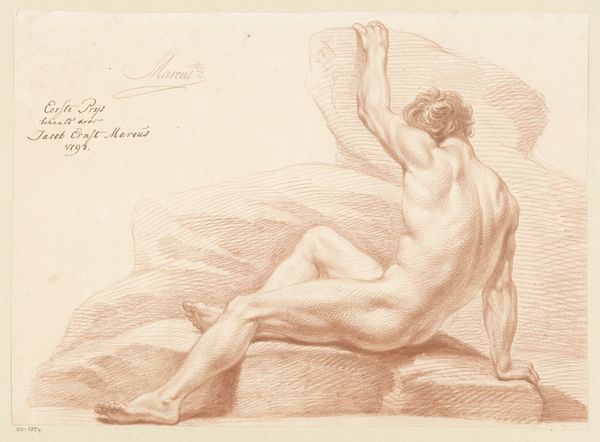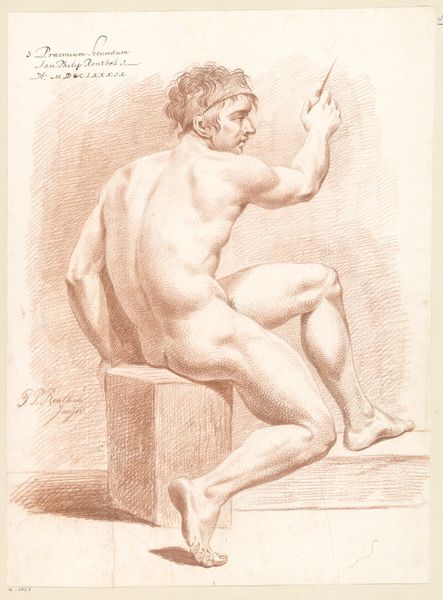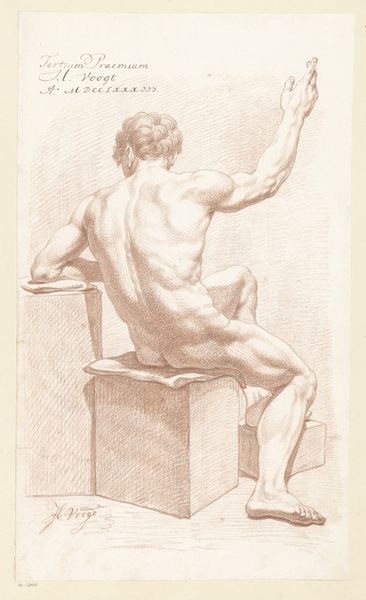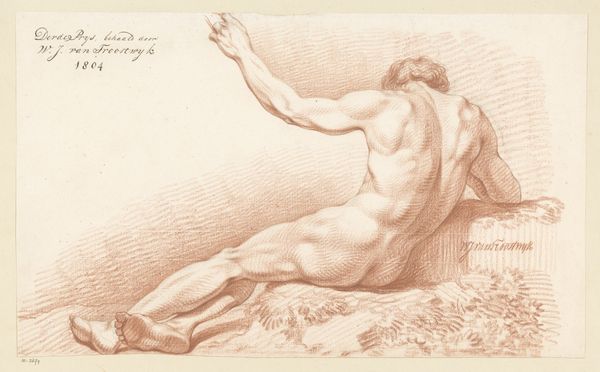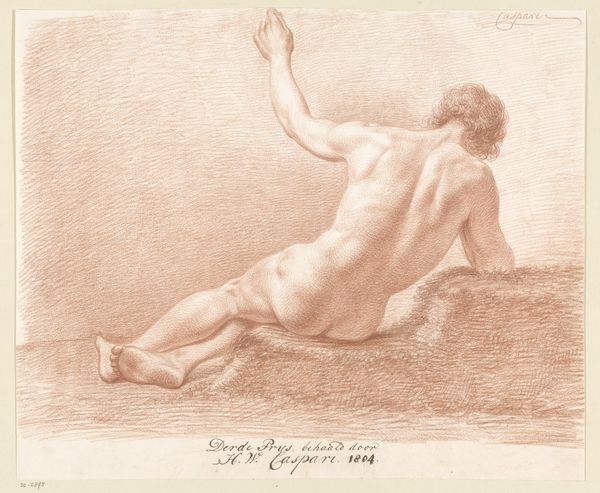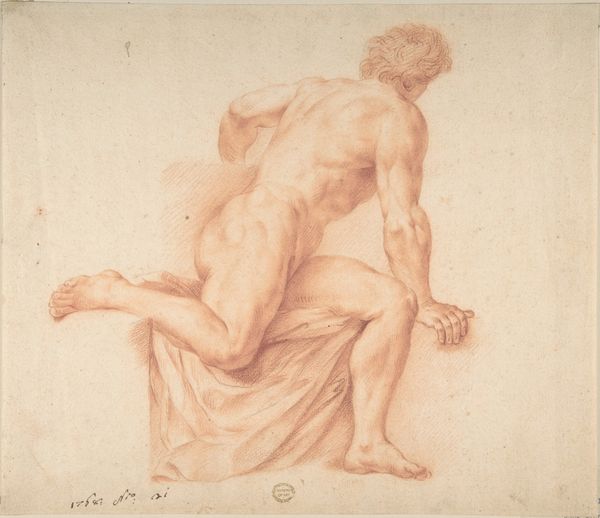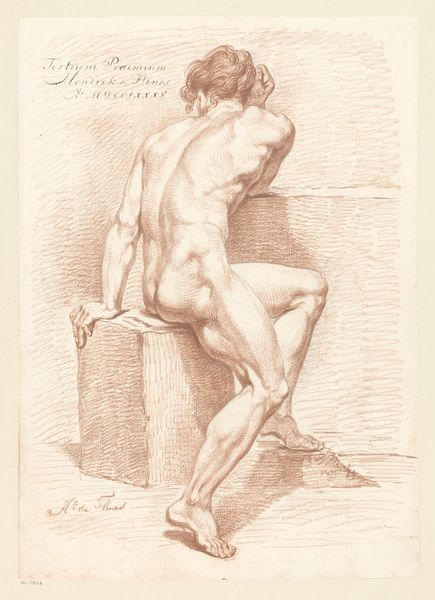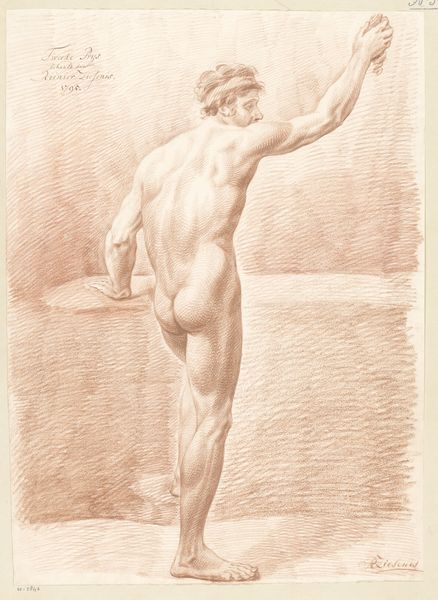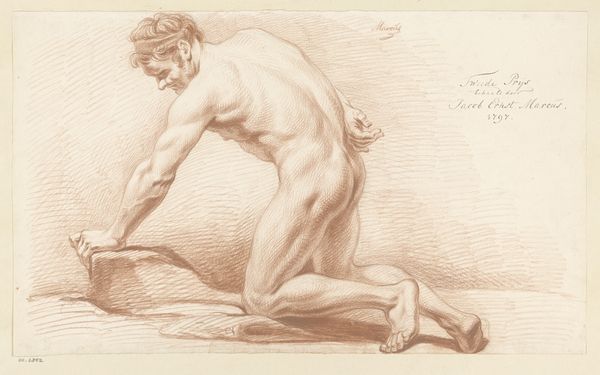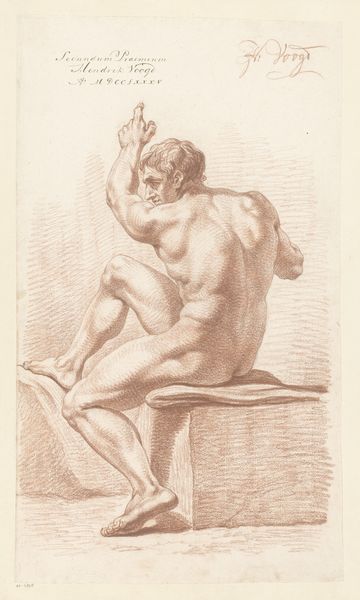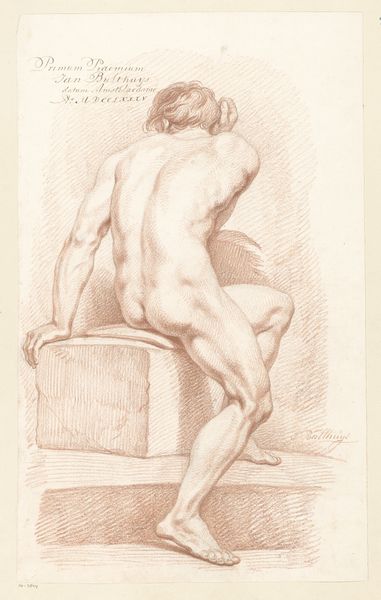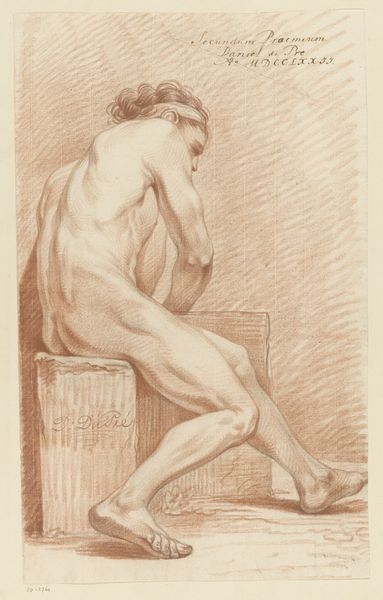
drawing, dry-media
#
drawing
#
figuration
#
form
#
dry-media
#
pencil drawing
#
line
#
academic-art
#
nude
Dimensions: height 315 mm, width 474 mm
Copyright: Rijks Museum: Open Domain
Curator: Here we have “Zittend mannelijk naakt, op de rug gezien,” which translates to "Seated Male Nude, Seen from the Back," by P. Luypen, likely created around 1807. It's rendered in dry media, specifically as a pencil drawing. Editor: There's a striking sense of restrained power in this academic study. The red chalk gives a warmth to the figure but also highlights the tension in the muscles. What do we know about its production? Curator: Well, the inscription tells us it won third prize in 1807. So, it's an academic work, likely created in a workshop setting under the constraints of artistic training and judgment by peers. We should consider how the reward system of these academies, its power and prestige, shaped not just this work but the hand and eye of the artist. Editor: Precisely. It invites us to explore how ideals of masculinity and the male gaze were being codified and celebrated through these educational institutions. I mean, consider the very act of posing, the performance of the body. The slight curve of the spine seems burdened, the arm raised against some unseen weight... What kind of stoicism or perhaps imposed pressure does it imply? Curator: Absolutely, the very physical act of producing such a detailed, academic nude – the choice of material, the labor invested to translate flesh into line and shadow – also speaks volumes. How were the pencils manufactured? Where did the model come from, what was he paid? These unseen aspects are material, too. Editor: Yes, and it reveals not just a rendering of a nude but also the socioeconomic framework within which that rendering was produced. And looking at the gaze—ours, the artist's, and potentially even the model's implied one—creates a triangle of perception charged with its own historical baggage. It demands we interrogate the inherent power dynamics in looking. Curator: Indeed. Academic art production could only arise through particular social and industrial circumstances. That the institution of 'art' itself is socially constructed is important to realize when engaging with artworks from the era. Editor: Looking at Luypen's study, I see echoes of broader debates on embodiment, representation, and, ultimately, what constitutes acceptable artistic labor. It urges a necessary dialogue between the historical canon and more contemporary discussions around social justice and art making. Curator: Thanks for this thought-provoking approach, bringing those essential social structures to light! Editor: A necessary lens, really. Hopefully, that gives our listeners something new to think about next time they see an "old master.”
Comments
No comments
Be the first to comment and join the conversation on the ultimate creative platform.
